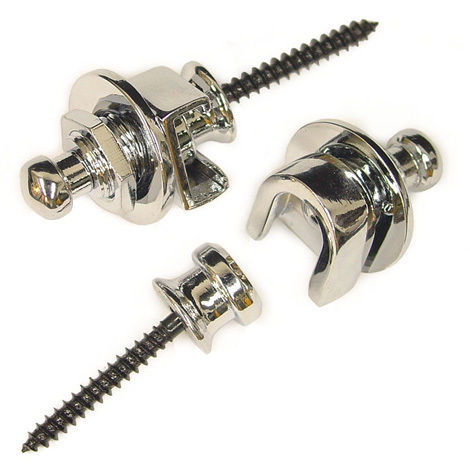-
Posts
262 -
Joined
-
Last visited
Content Type
Profiles
Forums
Events
Blogs
Gallery
Everything posted by JazzBass
-
Waiters? This should be on everyone's tool belt! ROFL! Very innovative, nicely done!
-
It's beautifully made - molding, stitching, etc. I say full price too - but if you feel "guilty" (don't know why), discount it $10 and call it a "sale".
-
Think Velcro
-
Well...hmm... I'd bet a month's pay that the choice of the slot system by a player, is due to two things - 1) they don't want a buckle that could ding the instrument while handling it off the body, or in its case. 2) the slot system is the only other system that they know, from what's always been available. . At the same time, they know, from experience, two things - 1) it's a real chore to adjust the strap, BUT 2) once adjusted, it is unlikely to need it to be moved, so we "deal with" the initial fitting. We measure our shoes, clothes, and belts. IMHO we should (ideally, of course) tailor our straps, as we tailor ours suits. HOWEVER - (you'll like this part) Adjustable straps absolutely have their uses, for a person with multiple instruments that they only play occasionally. It makes no sense to spend the money on custom tailoring when "off the rack" is all that's required. Although I am not part of the "leather business", it's obvious that it's rather necessary to have a stock of items for sale that are not "one-offs". Few if any could do business that way. I've been discussing this with a good friend and stratospheric guitarist. We believe that we do indeed have a concept that abandons the slot system, has no buckles or hardware, and may be adjusted in seconds, if need be. Once prototyped and tested by both of us, I'll happily share it here. Want a hint?
-
It's a two piece affair, requiring changing the strap button on the guitar, and screwing the other piece to the strap.
-
@Dwight Thanks for the tips on rawhide as well. I knew that there could be issues with different drying times with veg, so what you said makes a lot of sense - mold and dry the rawhide, then mold the leather to it. @immiketoo Thanks for the clearer explanation on using steel. I'll just have to experiment to see which materials work better on my somewhat crazy idea for the design.
-
Wow - glad I asked this question!! I've looked up those mentioned here. Every one mentioned are both inspirational, and enlightening! Many thanks to all !!
-
Thanks, Mike, Maybe I'm overthinking this, having never tried it before. Yes...but how? Assuming steel, is it generally glued inside the layers while flat, then formed? If the liner is formed first, then covered, does one use damp ,mouldable leather, or dry, finished leather? I worry about being able to cover a pre-shaped insert smoothly, using contact cement that sticks rather permanently, when covering complex shapes. Again, I may be overthinking it - guess I should just "wing it" and learn from the mistakes. (gee...what a concept!)
-
Many fast draw and competition holsters are lined with steel between the layers of leather, or (since CFDA prohibits steel liners), rawhide. I've also heard of Kydex being used. I have a rather radical "skeletonized" design for a holster that will absolutely need some form of hard liner. Does anyone have experience doing these types of rigs? This is a design that requires those skills, just to "prototype" it, to see if it works as designed. Any suggestions as to the procedure, will be greatly appreciated!
-
In addition to a solid surface, I've found that a "Dead-Blow Hammer" is a nearly miraculous tool. They are available in all different weights, and are DIRT CHEAP at Harbor Freight. It has lead shot inside the head. If you "commit" to a good, solid strike, it transfers all of its energy, and comes right off the tool with NO BOUNCE. Whoever invented this "better mousetrap" is a genius! Whether it's 3D stamps, drive punches, etc, nothing does a better job when you need a lot of force IMHO.
- 20 replies
-
A friend of mine, a great saxophonist was asked, "How can you play so well when you're drunk?" He said, "I practice that way".
-
-
What's the "lesson" ? Simple - Carry on. We are all the worst critics of our own work. When making items, it's done in many different steps that have us examining every square millimeter of the work. Many times, I've made a bad mistake (gee, ya think?) , and considered the item "ruined". I would always decide (after uttering a plethora of profanities, of course), to just carry on for the practice alone, instead of abandoning the whole thing. Guess what? Almost every time, the final result didn't come out anywhere near as bad as I had anticipated. Sure, if something is cut too short in length, or some other major functionality problem occurs, then I have had to chalk it up to experience and start over, BUT- Reading posts here, even including those in the "Critique My Work" forum, has shown me that people do indeed see the "forest", instead of the bark of the tree that's in front of the maker's face. Also, learning to correct, adjust or hide mistakes along the way, seems to be a rather necessary skill, in and of itself, and I'm certainly learning that the hard way at times I intend to just stay humble, continue to mess up, do my best to fix it and learn, and try to see the overall result instead of the "microscopy". Quote- "Making a mistake is understandable. Playing it without passion is inexcusable" - Ludwig van Beethoven. Quote- "Since I'm never completely satisfied with my work, I can't help but improve" - Chris Gordan, Musician. Carry on!
-
Single malt scotch generally solves the "red/white" dilemma. ROFL!!
-
Bingo! I'll go with what you (and Nigel's videos) said. If it's the effect that you want, it's "right".
-
Well, I called it a "stupid" question since it had nothing to do with leather crafting! ... didn't expect it to be my first question on the forum. ROFL!! Believe me, for the rest of it, I'll just remain humble, ask beginner's questions when necessary, and learn from all the nice folks here It really is a wonderful community of pros and amateurs, all willing to share. MANY Thanks to all!
-

Sheath. Not a case for a Pez dispenser
JazzBass replied to Bawarrior's topic in Gun Holsters, Rifle Slings and Knife Sheathes
Were the holes "dremel-drilled"? I sure wouldn't want to try to get through all of that with a diamond awl! Nice job. -
Interesting! I knew that there would be a variety of opinions on this topic. Great info for us newbies. Thanks! As Nigel said in his videos, "if you're getting the stitch that you want, then you're doing it right"
-
-
-
@MattW I've been blown away with your work, this one in particular. It's kinda tough to see how the gunstock side works, what comes off/how it's opened, BUT- The cutaway design is similar to a design that I did about 5-6 years ago, that I've wanted to acquire the skills to try to execute Did you use a steel, rawhide, or some other hard lining between the layers of leather, to get it to hold its shape so well? My design would absolutely need something like that, and I wondered if you had the knowledge/experience working with those kind of internal liners. If so, I'm going to have to "pick your brain" a little bit, if that's ok. That might just be the nicest, most innovative scabbard I've ever seen...the molding around the sights and magazine tube...Magnificent!
-
@Grey Drakkon I like it! Lazy? or creative? It looks good, is more than practical, and cuts the build time. What's not to like?
-
@fredk Interesting - I hadn't considered that angled holes would make the stitch stronger, but what you said makes sense. I'll leave the subject of "frilly underwear" to others...LOL!
-
Agree 100% - I'll do the slant for aesthetics, but don't mind a straight stitch for something "utilitarian". I was just curious as to what others think Thanks.
-
It seems that the experts and aficionados often vehemently insist upon an angle to a saddle stitch. Yes, it makes it easier to tell hand stitching from machine stitching, but- Forgive my amateur eye and possibly "plebeian" taste, but my eye is only "offended" if stitching is uneven in some way, either in line or tension, or visible(too big) holes, or too much "puckering" from tension. Why is the angle of the stitch such a point of contention for leather crafters? What is it that makes folks insist that the angled stitch looks better? Yes, I've finally figured out how to do either look, finding also that a stitch groove will force-flatten the stitch, etc. ...just an amateur, scratching his head on this one. Would love to hear the "why" behind this one, where it started, and why angled stitches are seemingly accepted as "correct" or "superior".




